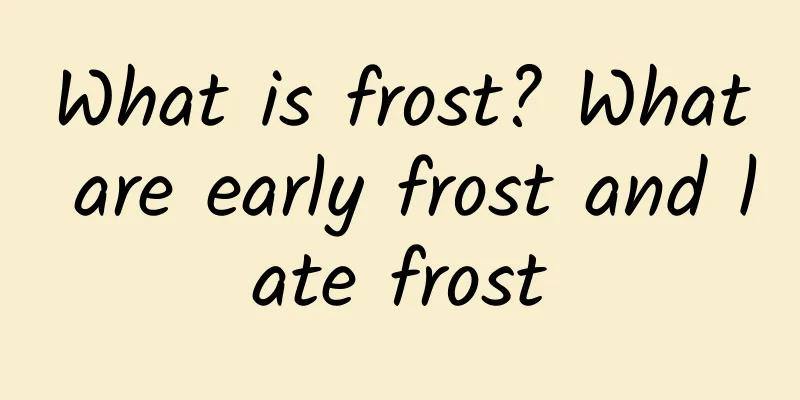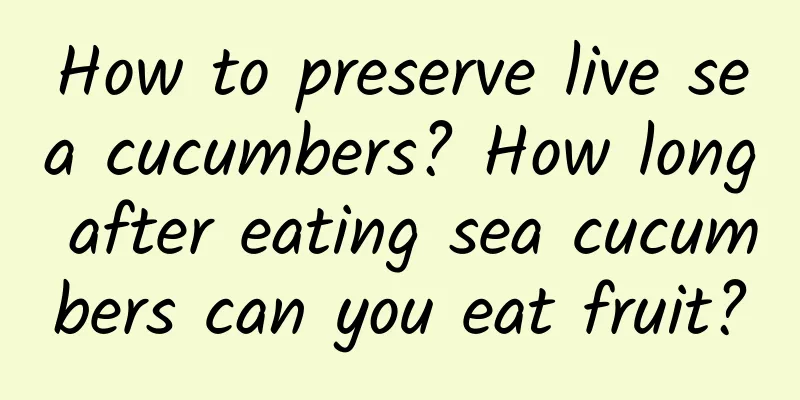What is frost? What are early frost and late frost

|
When talking about frost, people naturally think of frost. However, frost and frost are not the same thing. What is frost? What is early frost and late frost? What does the blue frost warning mean? In daily life, you may have heard of them, but when it comes to really explaining the difference between them or what one is, we can't express it completely, so we still need to learn more about the relevant common sense! Contents of this article 1. What is frost? 2. What are early frost and late frost? 3. What does a blue frost warning mean? 1What is frostFrost is a common agricultural meteorological disaster, which refers to a sudden drop in air temperature, with the surface temperature dropping below 0℃, causing damage to crops or even death. Frost usually occurs in autumn, winter and spring; frost does not necessarily occur when frost occurs, and frost does not necessarily occur when frost occurs. The temperature after autumn drops significantly with the frequent invasion of cold air, especially on clear and windless nights or early mornings. The radiation heat dissipation increases, and the temperature of the ground and plant surface drops rapidly. When the plant body temperature drops below 0℃, the cells in the plant body will dehydrate and freeze, and suffer from frost damage. The first frost in autumn is usually called the first frost, because the first frost always harms crops silently, so it is known as the autumn killer of crops. In meteorology, the first frost in autumn is generally called early frost or first frost, and the last frost in spring is called late frost or final frost. The interval from the final frost to the first frost is the frost-free period. 2What are early frost and late frostThe first frost after the beginning of autumn is early frost, and the last frost in spring is late frost. Frost is a common agricultural meteorological disaster, which refers to a sudden drop in air temperature and a sudden drop in surface temperature below 0°C, causing damage to crops or even death. Frost usually occurs in autumn, winter and spring. It is different from "frost". "Frost" is white ice crystals that condense directly on objects when the water vapor in the air near the ground reaches saturation and the ground temperature is below 0°C. Frost does not necessarily occur when there is frost. Frost does not necessarily occur when frost occurs, and frost does not necessarily occur when frost occurs. Small differences: Frost, frost and the Frost Descent solar term are not the same thing, they are three different concepts. Frost refers to a kind of white ice crystals condensed by water vapor on the ground in cold weather; frost refers to a common agricultural meteorological disaster phenomenon; the Frost Descent solar term refers to the season reflecting the sudden drop in temperature. 3What does a blue frost warning mean?Blue Frost Signal: Within 48 hours, the minimum ground temperature will drop below 0℃, which will have an impact on agriculture, or has already dropped below 0℃, which has had an impact on agriculture and is likely to continue. Yellow frost signal: The minimum ground temperature will drop below -3°C within 24 hours, which will have a serious impact on agriculture, or has already dropped below -3°C, which has had a serious impact on agriculture and is likely to continue. Orange frost signal: The minimum ground temperature will drop below -5°C within 24 hours, which will have a serious impact on agriculture, or has already dropped below -5°C, which has had a serious impact on agriculture and will continue to have a serious impact on agriculture. Defense Guide: 1. The government and agricultural and forestry authorities shall perform emergency work to prevent frost in accordance with their duties. 2. Rural grassroots organizations should mobilize the masses extensively to prevent and resist disasters. 3. For crop and forest breeding, we must actively adopt anti-frost measures such as field irrigation to minimize losses. 4. Take measures such as covering and spraying antifreeze on vegetables, flowers, melons and fruits to reduce frost damage. |
<<: What are the benefits of eating sesame oil? How to eat sesame oil
>>: What causes frost? Is frost a weather phenomenon?
Recommend
What should I drink when my period hurts?
The phenomenon of abdominal pain during menstruat...
What foods are suitable to eat during menstruation?
I believe all women know that due to physiologica...
Can I use Bluetooth headsets on airplanes? How to use Bluetooth headsets
Electronic products are being updated and replace...
What disinfectant is good for the new coronavirus? Disinfection methods to prevent the new coronavirus
We all know that the new coronavirus is a highly ...
How long will it take for bleeding to occur without a fetal heartbeat?
The fetus has no heartbeat, which means that the ...
Is there a lot of vaginal discharge during the luteal phase?
Everyone knows that women have a physiological pe...
What is the nutritional value of Gongcai? How to preserve Gongcai
Gongcai is named for its crispy texture and rich ...
What does it feel like to wean off breast milk?
Many breastfeeding mothers need to stop breastfee...
Is sweating useful during confinement?
The so-called postpartum sweating means that you ...
What color is dried lily? How to identify dried lily
Dried lily bulbs are generally used to make soups...
The most effective way to whiten your face
For Chinese people, daytime is the prerequisite f...
Why is there a hard lump on the cervix? Let you know the truth
Some women have a lump on their cervix, and the l...
What are the common gynecological diseases among women?
Women can easily develop gynecological diseases d...
Introduction to curettage and dilation of endometrial thickening
For women, the uterus is a very important organ, ...









